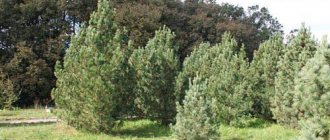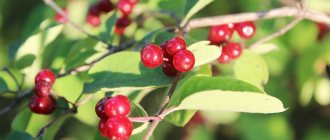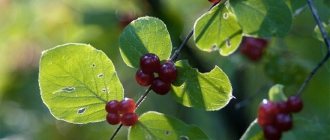The forest always attracts people with its beauty. It served people as shelter, gave food, and protected them from dangers. Today, people no longer need to protect the forest. He comes under his roof to recharge himself with energy and stock up on vitamins, which are given in abundance by the riches of the forest. A plant with edible fruits can be found in any corner of the green area.
However, the forest can be fraught with many dangers. This refers not only to wild animals, but also to poisonous plants, which can be quite difficult to distinguish from medicinal or simply edible ones. It is important to know them in person in order to reduce the risk of error to a minimum. Forest berries are found in sufficient quantities in nature. A plant with edible fruits - the names and special characteristics of the most common berries in our latitudes are presented below - you need to be able to distinguish.
Blackberries - wild berries
A plant with edible fruits (there are wild and cultivated plantings) can often be confused with poisonous ones. However, the same cannot be said about blackberries. This shrub is known even to children thanks to its special fruits. Outwardly, they are very similar to raspberries, but they differ in color and are slightly larger in size. The color of blackberries is black, with a bluish coating that cannot be confused with other berries. Blackberries ripen between August and September.
The distribution area of this shrub is quite large. It prefers places on river banks, fields and water meadows, which are found in abundance throughout European Russia, Western Siberia, the Caucasus and Central Asia.
Quinoa
Quinoa is a plant of the amaranth family, very common in Russia. Quinoa saved many people from starvation during the war. They baked “green cakes” from quinoa, mixed it with flour, and made cutlets. Quinoa tastes almost tasteless, but is very nutritious.
In 100 g of quinoa:
- 368 kcal,
- 14.12 g protein,
- 64.16 g carbohydrates
- 6.07 g fat.
Fresh quinoa can be added to omelettes, soups, and main courses.
Quinoa seeds are used to prepare various cereals. Quinoa also has medicinal properties. It is better to use green quinoa for food. Quinoa can cause allergies.
Dogwood
The berries of this plant, common in Russia, Crimea and the Caucasus, have long been famous for their beneficial properties. Therefore, in this case, the question does not arise which berries to avoid and which ones to eat. Forest thickets of dogwood (a plant with edible fruits of this berry also grows successfully in garden plots) especially delight those who during the season collect whole buckets of a unique product for fresh consumption and for packing for the winter. Its juicy fruits reach three centimeters in size and have a cylindrical pear-shaped or oval shape. These sweet and sour tart fruits of red, yellow or ruby color cannot be confused with any others. The ripening process of berries occurs from August to October. The astringent taste of fully ripe fruits is slightly reduced compared to unripe ones.
Cranberry
This low shrub with dark green leaves prefers to grow in swamps, so it can almost always be found in the forest or tundra zone of Russia. Cranberries - what are they? Forest. A plant with edible fruits, so beloved in the Russian outback, almost always grows only in the wild. When you come to the forest, you can safely eat cranberries, because it is not at all difficult to distinguish these healthy berries from other forest plants. First of all, these red berries are not hidden under the leaves, so it will be quite easy to notice and find them. The fruits ripen in September, but you don't have to rush to pick these berries. They have the ability to be preserved under the snow, and many connoisseurs claim that overwintered berries are much sweeter. Autumn berries are firmer, unlike those that can be found immediately after the snow melts. The only drawback of picking berries in the spring is that long-term storage is impossible.
Plants that help you survive
Plant foods contain almost all the substances necessary for a full life: vitamins, minerals, carbohydrates. Some plants have leaves and shoots for food, others have flowers and inflorescences, and still others have berries. And certain species have healthy and nutrient-rich roots.
The main advantage of herbs is the ability to eat them without pre-processing, as well as their availability and prevalence in almost all corners of the Earth (except perhaps for polar and desert regions). Knowledge of the properties of forest plants will help a lost traveler maintain his strength and successfully survive in the wild.
Black elderberry
This plant was able to spread widely in our latitudes, namely throughout the European part of Russia, Ukraine, Belarus, and also in the Caucasus. After all, it is in these regions that the fertile lands are ideal for this shrub. The ideal conditions for black elderberry are deciduous forests, although sometimes it can be found mixed with coniferous forests. You need to look for black elderberry bushes on the edges or in the undergrowth.
There are several varieties of elderberry, so it is important to know exactly what you can collect, which wild berries? A plant with edible elderberry fruits is not much different from those species that should be avoided. The main difference between the healthy black elderberry and its close relative, the red elderberry, is the color of the fruit. The berries of the poisonous plant have a rich red color, while the edible fruits are black with a purple tint, with juicy red-violet pulp.
Black elderberry berries are very small, but they are collected in large clusters. Their ripening period is August and September, but they remain on the branches until the leaves fall.
Forest plants with edible fruits: a closer look
At all times, the forest has attracted people, providing shelter, building materials, firewood, and food.
Mushrooms and forest plants with edible fruits have long been used as the latter. Knowledge of these plants will not be superfluous in our time: it will help to diversify the diet, supplement it with vitamins, microelements and other useful substances. Forest plants with edible fruits: caution does not hurt
The most important rule that a novice mushroom picker, berry picker and other plant material needs to remember is: “You can only collect familiar plants.”
The slightest doubt is a good reason to refuse a delicious fungus, a fragrant berry or a cute nut. The risk is too great, and an unfamiliar plant may turn out to be poisonous.
The forest is a real storehouse of nature, full of healthy and tasty plants. But also in dense thickets and on lovely edges you can find plants that are inedible and even poisonous. Dangerous berries can look very attractive, so you need to know them by sight so that outdoor recreation does not lead to tragedy.
Tasty and healthy
A special place among edible forest plants is occupied by berries - strawberries, blueberries, raspberries, blueberries, blackberries, lingonberries, cranberries. Cranberries for health and beauty. They are all incredibly useful.
Raspberries are a recognized remedy for high fever: the fruits, pureed with sugar, provide relief from colds and flu. Also raspberriesWhat are the benefits of raspberries - properties that you didn’t know about? They are dried and brewed as tea. In terms of fiber content, raspberries are ahead of many fruits and berries, so those who are on a weight loss diet often include them in their diet.
Blueberries are an excellent remedy for the eyes. Small dark blue berries covered with a bluish coating have an excellent taste. Next to blueberries, the benefits and harms of blueberries: health, strawberries rich in organic compounds and vitamins often grow from the forest. Wild berries differ from garden strawberries in their delicious aroma. Strawberry leaves are added to tea, and a variety of sweets are prepared from the fruits.
Blackberry subshrubs strewn with thorns are difficult to confuse with anything. As they ripen, green blackberries change color to brown, red-brown and finally black-purple.
Blackberries, shaped like raspberries, are very healthy. They contain sugars, vitamin C, organic acids, tocopherol, Vitamin E (tocopherol) - do not get carried away, carotene. Blackberries are indispensable for the treatment of kidney diseases; they are also used in the treatment of colitis and bladder. Blackberries are also recommended for those who suffer from joint diseases.
In addition, blackberries taste very pleasant, and, according to gourmets, wild berries are even tastier than garden varieties. Blackberries are used to make jams and syrups, fruit drinks, jelly and compotes, and even make wine. The berries are good to freeze for the winter.
Many benefits of forest plants
- Hawthorn
Tall thorny hawthorn bushes are decorated with red berries at the end of summer. These berries have a sweetish taste and mealy pulp. They can hardly be called tasty, but hawthorn berries, like the leaves of this plant, are valuable medicinal raw materials. Berries help lower blood pressure, so they should not be consumed by those suffering from hypotension.
Alcohol tincture of hawthorn is used in the treatment of a number of heart and vascular diseases. In addition, honey tinctures are prepared from ground berries - an excellent remedy for fatigue or nervous exhaustion. The berries are used to make a delicious filling for pies, and the leaves are brewed like tea. They also make jelly from pectin-rich berries, make jam, and make various sweets.
- Kalina
Small trees or shrubs with carved leaves and small white flowers collected in umbrella inflorescences are viburnum. Closer to autumn, berries appear on the branches - red as blood. They are very decorative and are sometimes used to create floral arrangements.
Bright red viburnum berries are a little bitter, but very healthy. They are recommended to be used as a diaphoretic and diuretic. In addition, viburnum is used to treat heart ailments and stomach ulcers. The organic acids contained in viburnum help strengthen the nervous system. A large amount of pectin gives viburnum cleansing properties.
It is recommended to collect viburnum after the first frost, when the berries become less bitter. Compotes, jams and jelly are prepared from viburnum, and this berry is tasty not only on its own, but also mixed with other fruits.
- Rose hip
Pink and white rosehip flowers often decorate forests and meadows. They are very fragrant, but the true value of this plant lies in the fruits, not the flowers.
Everyone knows about the benefits of rose hips. Rosehip is a real record holder for the content of vitamin C, of which the inconspicuous orange-red berries contain tens of times more than lemons. Interestingly, vitamins are preserved even in dried fruits. Rosehip has a bactericidal and phytoncidal effect and contains a large amount of antioxidants. The berries are used to treat vitamin deficiency, kidney inflammation, intestinal, liver, and gall bladder diseases.
Syrups and decoctions with a pleasant sour taste are prepared from rose hips. Jam, jam, marshmallows and various drinks based on rose hips are delicious - these vitamin-rich treats are perfect not only for adults, but also for children.
- Barberry
These shrubs with oval leaves and elongated bright scarlet berries can be found in Europe, Asia and North America.
The bright red sour berries of barberry contain a considerable amount of organic acids (citric, malic, tartaric), vitamin C and beneficial microelements. Barberry berries are used to make jelly, compotes, jam, sweets, marshmallows, grind the berries with sugar and add them to other fruits. Barberry is also good as an additive to tea - it gives the drink a subtle aroma and pleasant sourness. Dried berries are a traditional seasoning for some rice dishes, for example, they are added to pilaf or sweet rice pudding.
Maria Bykova
|
|
Cowberry
Next to cloudberry berries you can often find other forest berries, a plant with edible fruits - lingonberries. This evergreen shrub with branched stems is small in size, but its thickets can stretch for several kilometers.
The fruits of this plant are small, round in shape and painted in a bright, rich red color. Like most forest plants, lingonberries ripen in August and September.
Most often, lingonberries can be found in spruce and pine forests, although they are also found in deciduous and even tundra. Its distribution area is almost the entire territory of Russia.
Inedible berries
In addition to poisonous berries, inedible ones are also found in Russia. They do not pose any particular danger, although they are not suitable for consumption. One of these species is brittle buckthorn. The shrub prefers areas near streams, lakes and rivers. The berries begin to ripen in August.
Here's how their color changes:
- green;
- greenish-yellow;
- yellow-red;
- red;
- black.
At the same time, you can see fruits of different shades on the bush. The drupes are hidden in the axils of the leaves, each berry is attached to a stalk. In official medicine, preparations prepared using buckthorn bark are used as an emetic and laxative. Fruits are also mentioned in folk recipes, but their benefits have not been proven. However, they do cause diarrhea and vomiting, so it is best not to eat them unless necessary. Birds readily feast on ripe buckthorn - it is harmless to them.
Forest honeysuckle is another inedible species. The shrub is used for decorative purposes. Forest honeysuckle berries are bright red. A distinctive feature is the paired arrangement. Birds peck ripe fruits, but people should not try them. There is no risk of poisoning, but vomiting or diarrhea may occur, since the berries have an emetic and laxative effect.
Edible honeysuckle is a close relative of the forest honeysuckle. In autumn, oblong dark blue berries, covered with a thin coating, ripen. Many varieties of edible honeysuckle have been developed, and work in this direction continues. The cultivated species can also be found in the forest, as birds peck the berries and spread the seeds tens of kilometers around.
Turn
In the European part of Russia, in the Caucasus and Western Siberia, you can find other, unique forest fruits. A plant with edible fruits, its name is thorn, or blackthorn. Its dense, thorny, impenetrable thickets can be found in ravines, on forest edges, near rivers and along roads.
Blackthorn berries are quite small. They have a round shape and are classified as single-druped plants. The color of the fruit is dark blue, with a waxy coating. The tart-sour berries of sloe ripen quite late - in August and September, and they remain on the branches until spring. After the first frost, sloe berries lose their astringency. Blackthorn is highly prolific.
Blueberries - favorite forest berries
A plant with edible fruits, blueberries, are considered originally Russian. The fact is that almost all of the world's reserves of this healthy berry grow in Russia. Most often, this shrub can be found in the North and Far East, although it is sometimes found in the Baltic countries, Ukraine and the Caucasus. Blueberries are capable of forming continuous wastelands in which there is no room for a tree layer. Dark blue blueberries have a waxy coating. Very often this plant is confused with its close relative - blueberry. Their appearance - fruits and leaves - are indeed very similar, however, the taste of the fruits of these plants is significantly different.
One of the riches of our nature is forest berries. A plant with edible fruits can supplement your diet; you can enjoy tasty and healthy berries while hiking in the forest. They will help satisfy hunger and saturate the body with vitamins. Some plants - strawberries, raspberries, rose hips - are not named in the list, because they have been known to everyone since childhood, and they are often grown in personal plots.
Edible and poisonous plants and fruits
When in extreme situations, to maintain strength it is necessary to use all possible sources of food, including plants. Plants are an excellent source of nutrients that will help you survive.
There are about 300,000 plant species on the planet. About 120,000 of them are edible. About 2,000 edible plants grow in Russia.
In ancient times, people knew very well which plants were edible and which were poisonous. This skill is very important in extreme situations. Plants and fruits contain a lot of nutrients that can help in extreme situations. Some fruits can act as an energy drink, and some can stimulate the body. You can use roots, bulbs, shoots, stems, and fruits for food.
Edible plants
Many parts of plants can be eaten. Rhizomes and tubers. Tubers and roots of plants such as cattail, almond, plantain, forest fern, chicory, sorrel, white and water lily are excellent for consumption as food. You can eat plant shoots: rhubarb, white line, sugar cane, fan palm, bracken.
The leaves of plants such as dandelion, sorrel, nettle, fireweed, and burdock are considered edible. In addition, you can eat the flowers of plants: rose hips, horse sorrel, chamomile, clover, dandelion, acacia, birch, and willow.
Some types of plants can be used as a medicine against scurvy, which is very important for survival. To do this, you need to use plants containing vitamin C. Spruce needles are ideal for this.
Many plants can easily replace leafy vegetables from our regular diet: - Dandelion is a plant that is completely edible. The leaves and roots can be consumed raw. If you grind and roast the root, it can be used as coffee. - Coltsfoot. Leaves and shoots are used for food. - Clover. The stems and leaves can be used in salads. - Nettle. After soaking the leaves in boiling water for 5 minutes, they can be used in salads. They are also used in soups.
Edible fruits
In Russia you can find a large number of shrubs and trees with edible fruits. Blueberry. Grows in most of Russia. Can be found in pine forests, broad-leaved and spruce forests, and swampy places. Blueberry height is 10-50 cm. Lingonberry. Shrub 15-20 cm high. Grows throughout Russia. Prefers spruce and pine forests. The berries ripen in August - September. Blackberry. It is found in almost the entire part of Russia. Grows along river banks and in flood meadows. The bush is covered with thorns. Blueberry. The shrub can reach 1 m. In appearance, blueberries are similar to blueberries. Has a large habitat. Can be found in wetlands, dry areas and mountains. Grows in the European part of Russia, the Far East, the Urals, and the Caucasus. Juniper. A small tree-like shrub. Grows in the forest zone of Russia. Cranberry. Distributed in the forest zone of Russia. Grows in swamps and wetlands. Rowan. Widely distributed throughout Europe. The fruits are rich in vitamins. In addition to the above, sea buckthorn, bird cherry, stone fruit, wild currants, strawberries, and raspberries will help replenish your strength.
Poisonous plants and herbs
There are a considerable number of plants that are considered poisonous and can harm your health and sometimes lead to death. Umbrella plants should be avoided: ash, foxglove, vekh. Blooming umbrellas are especially poisonous and should not be handled with bare hands. Also considered poisonous are: - dope - henbane - buttercups - spurge - bindweed - foxglove - hydrangea - castor bean
Poisonous fruits
Some types of berries should also be avoided: - crow's eye - wolf's bast - red nightshade - lily of the valley - belladonna - swamp whitewing - euonymus - black crow
How to determine which berries are edible
Never eat unfamiliar plants and their fruits. If you find yourself in a hopeless situation, then there are signs that will most likely help you distinguish edible plants from inedible ones: - edible plants usually grow in large clusters; - in most cases, edible berries have one fruit on the stem of the berry branch; — if plants secrete milky sap, then you should not eat it; — most aquatic vegetation is edible; — most fruits of shrubs growing on peat bogs can be eaten; - whether a fruit is edible or not can be recognized by bird droppings; if it contains seeds or peels, then such fruits can be used as food.
Edible plants can be determined experimentally. Rub a small amount of an unknown plant between your fingers. If there is no reaction after 15 minutes, place it on the crook of your elbow. If there is no reaction after 15-20 minutes, place the plant between your lips. If there is no irritation or burning within 15-20 minutes, then take a small part of the plant into your mouth and chew without swallowing. If after 15-20 minutes there is no burning sensation or bitter taste, then swallow it. If after 15-20 minutes there is no nausea, dizziness or other signs of poisoning, then you can use a small amount of the plant for food. If there is no deterioration in health the next day, then such a plant can be used for food.











